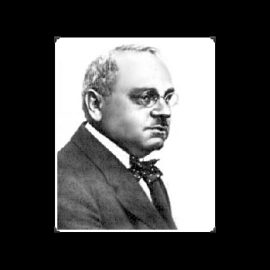

This article is an excerpt from the Shortform book guide to "Many Lives, Many Masters" by Brian L. Weiss. Shortform has the world's best summaries and analyses of books you should be reading.
Like this article? Sign up for a free trial here .
What is the book Many Lives Many Masters about? What are the main themes brought out in its story?
In 1981, the course of Dr. Brian Weiss’s career changed dramatically when one of his therapy patients, “Catherine,” suddenly recalled details of her past lives while under hypnosis. Though Weiss, like many scientists, is a natural skeptic, his experience with this patient convinced him that there are spiritual “Masters” providing help and guidance from beyond the veil. He claims that the Masters shared messages revolving around four major themes.
Read on to learn the four themes you can find in the book Many Lives Many Masters.
Messages From the Masters
In her treatments, Catherine recalled events that took place after her past deaths. As she recalled those experiences, Catherine’s voice changed in tone and volume and she began speaking about profound metaphysical ideas. Afterward, she had no memory of these moments, despite remembering the details of the past lives she recalled before and after them. Weiss realized that, in those times, Catherine wasn’t speaking her own mind: She was acting as a channel, allowing other spirits to speak through her. Catherine later identified these spirits as highly-evolved “Masters” whose goal was to reveal divine truths to Weiss through Catherine.
After making contact with the Masters, Catherine began to channel their words more frequently. These messages are presented in the book Many Lives Many Masters. We’ll explore the messages as they relate to four themes: the nature of life, the purpose of life, the nature of death, and the structure of the afterlife.
Theme #1: The Nature of Life
The first message from the Masters is that life is eternal—human spirits are not born, nor do they permanently die. Instead, human souls cycle between being embodied in the physical realm and living as pure spirit in the spirit realm.
(Shortform note: Critics of reincarnation have highlighted a logical problem in this idea: Namely, that human consciousness relies on a living, physical brain. Since the brain dies when the rest of the physical body dies, they argue that there is no way for consciousness (or the “spirit”) to survive physical death, which makes it impossible for the same spirit to reincarnate into a different body.)
Furthermore, the Masters say, we accumulate abilities and talents—and, sometimes, vices—over the course of lifetimes. This is why some people have natural abilities or struggles from birth.
(Shortform note: In Past Lives of the Rich and Famous, Sylvia Browne also argues that talents accumulate across lifetimes until they become almost habitual. In fact, many of the celebrities whose past lives she explores started honing their skills in previous lifetimes; for example, she relates that Jimi Hendrix was a gifted musician in almost all of his 39 lifetimes.)
Despite our varying talents and struggles, the Masters also related that everyone is inherently equal; however, some people’s natural gifts and beauty are obscured. The process of evolving through lifetimes is partly about learning to find those inner qualities and bring them out into the light. (Shortform note: There is another way to think about the process of revealing natural gifts, outside of reincarnation: In Big Magic, Elizabeth Gilbert argues that this process is the basis of all creativity. To develop this creativity, Gilbert recommends pursuing your natural interests until you discover your hidden talents.)
Finally, the Masters gave insight into the nature of human unhappiness. They argue that humans are unhappy because they’re constantly focused on accumulating wealth and haven’t learned the value of balance, which the rest of nature intuitively understands.
(Shortform note: Other authors agree that humans focus on accumulating more wealth than they need to be happy. For example, in David and Goliath, Malcolm Gladwell argues that more money does make you happier—but only up to a family income of $75,000, after which happiness begins to decrease. In other words, once you have enough money to meet your family’s basic needs and even spring for a few luxuries, striving for more will only make you miserable.)
Theme #2: The Purpose of Life
The Masters also delivered many messages to Weiss about the purpose of life—the reason that immortal human souls periodically take on physical bodies. According to the Masters, the purpose of life is to learn. Specifically, every human spirit is primarily focused on learning universal values like “love and hope, faith and charity.” Though these seem like simple concepts, each is multifaceted, and it can take many lifetimes to learn all the nuances of them.
(Shortform note: Many world religions emphasize the importance of these same values. For example, the Bible stresses the importance of “faith, hope, and love”; charity is one of the five fundamental Pillars of Islam; and charity and love are central tenets of Buddhist ethics. The fact that religious people from all over the globe have spent centuries pursuing the same values speaks to their universal nature and the fact that they are difficult to fully embody, as the Masters say.)
According to the Masters, we have to learn these values while physically embodied because intellectual knowledge is not the same as true wisdom. It would be impossible to fully grasp these values in the spirit world because to truly learn something, you have to embody it physically and put it into practice in your own life. (Shortform note: In Conversations With God, Neale Donald Walsch argues that we become physically embodied not necessarily to learn, but to “experience” first-hand the knowledge that we already possess. He believes that we already know everything we need to before we become corporeal, but being embodied allows us to experience this knowledge more viscerally.)
Beyond Learning
However, learning lessons isn’t the only purpose of life on Earth. According to the Masters, many souls also choose to become embodied in order to pay off the karmic debts they owe to other souls. These debts rack up when we wrong other people—and if we don’t pay them off before death, they can accumulate across lifetimes.
(Shortform note: The Masters mention these karmic debts as just one reason a soul may choose to incarnate—however, in Hinduism, karma is the driving force that keeps all souls tied to the cycle of reincarnation. In other words, you won’t be free to stop reincarnating and remain in the spiritual realm until you completely balance your cosmic tab and owe no karmic debts to anyone.)
Finally, the Masters also related a message about Weiss’s specific purpose on Earth: Namely, that the best way for him (and, presumably, any medical or spiritual practitioner) to help people while they are physically embodied is to help them move past their fear of death. This is crucial because fear wastes energy and prevents us from doing what we came here to do.
(Shortform note: This may sound like a futile mission since many people assume the fear of death is a fundamental part of being human. However, in Antifragile, Nassim Nicholas Taleb argues that the fear of death is actually a historical anomaly. Until the Enlightenment, people were often more concerned with dying in an honorable way than with avoiding death in general.)
Theme #3: The Nature of Death
The Masters also relayed messages about the nature of death. They argue that dying is just another transition between phases of life, much like moving from childhood to adulthood. (Shortform note: This idea of death as a spiritual transition mirrors the physical transition our bodies undergo. After death, our bodies decay, transitioning from one cohesive body into a loose collection of atoms that eventually become part of the surrounding ecosystem.)
Furthermore, the Masters say that people who have near-death experiences will be allowed to fully cross over only if they have learned all the lessons they set out to learn in their current life. Otherwise, they will be sent back to continue living.
(Shortform note: Dr. Raymond Moody echoes this sentiment in Life After Life. All the people he interviewed who had survived near-death experiences described being “sent back” to their physical bodies at a certain point. However, they disagreed on why they’d been sent back: Some believed it was because they still had lessons to learn (as the Masters said), while others believed it was simply because they chose to return of their own free will.)
Theme #4: The Nature and Structure of the Afterlife
Weiss also learned about the structure of the afterlife during his sessions with Catherine. As Catherine began to remember more detail from her past visits to the spirit realm at the end of each past life, she told him that the afterlife has three stages. In the first stage, souls simply rest and recover from the trauma of living an entire lifetime on Earth. In the second stage, each soul reviews the lifetime they just completed and processes all the lessons they learned in that lifetime. Finally, in the third stage, spirits decide where to reincarnate next and what lessons they want to learn in the next life.
Later, Catherine channeled another Master spirit who confirmed this description. The Master provided more detail: There are actually seven spiritual planes in the afterlife, each of which is further divided into subplanes. The Master also related that souls experience these planes differently depending on how experienced they are: For example, while the average spirit can only review the lifetime they just completed, more experienced souls can review all of history.
(Shortform note: The specific reference to seven planes is another link to theosophical ideas: Theosophists specifically believe in seven planes divided into various subplanes, just as Weiss describes here. While other esoteric religions discuss the idea of planes of existence, they’re usually divided into different numbers: For example, three (or 14) in various sects of Hinduism and four (or five) in Kabbalah.)
The Master spirit also confirmed a particularly notable feature of the afterlife: Spirits who are not currently embodied can indeed send messages to embodied people. This interaction takes place on a specific plane, which spirits can visit to communicate with embodied people to whom they still owe a debt. This communication can take place in many forms: Spirits might reveal themselves in the form of apparitions, or they may choose to communicate through other means.
| Other Perspectives on the Other Side Other writers describe people’s initial experiences in the afterlife in similar ways. For example, in Life After Life, many of the interviewees described being surrounded by their deceased loved ones after leaving their physical bodies. Almost all the interviewees also described meeting a being of pure light who surrounded them in a sense of comfort and peace, similar to the first stage that the masters describe here. Similarly, in Life on the Other Side, Sylvia Browne describes “the scanning machine,” which spirits use to review their recent lives, and the “orientation room,” where they plan the details of their next life. These areas of the afterlife map onto the second and third stages that the Master described to Weiss. In the same work, Browne also confirms the idea that spirits can communicate with embodied people. In addition to appearing as apparitions, she argues that spirits can communicate by manipulating physical objects—knocking over framed photos of themselves, turning TVs on and off mysteriously, or dropping coins in strange places. |

———End of Preview———
Like what you just read? Read the rest of the world's best book summary and analysis of Brian L. Weiss's "Many Lives, Many Masters" at Shortform .
Here's what you'll find in our full Many Lives, Many Masters summary :
- How a skeptical scientist was convinced that reincarnation is real
- The case study of "Catherine," a patient who recalled her past lives
- The important life messages passed down by Catherine's masters







Nice review of the book. You explain about different religion charity of Christianity, something from Islam and Buddhism. The entire concept is Hindu/Sanatan dharmik… but never mentioned even once. The thematic points are as mentioned in Bhagwatgita. While I was reading this I felt it’s been reviewed by a practicing Hindu. It’s time to pay due credit.